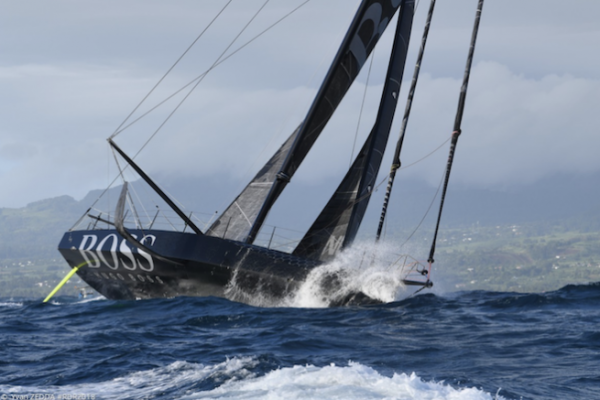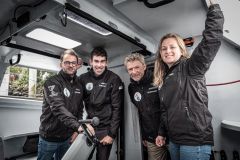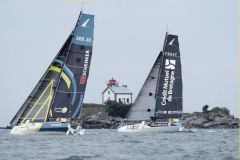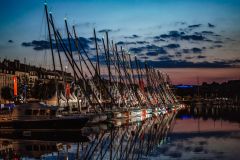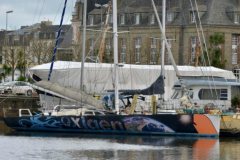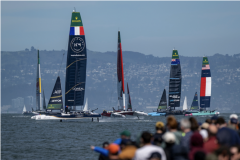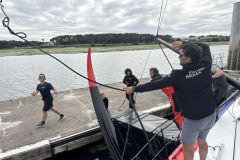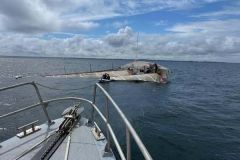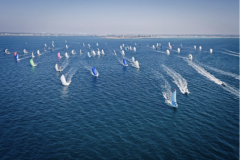What brings them together is the gauge
As we saw in the article on Gauges offer more or less architectural or technological freedom. For example, the Minis 6.50 proto gauge does not constrain the shell shapes. Hence the multiplication of the new Mini6.50 with scow shapes (sailboat with very wide bows) since David Raison demonstrated the architectural advantage. they are used to bring together comparable boats on the same event.
Some are very restrictive, others more open to change. The Imoca gauge, that of the Vendée Globe sailboats, is a rules box. This English term is very explicit, it is about putting a boat into the rule box.
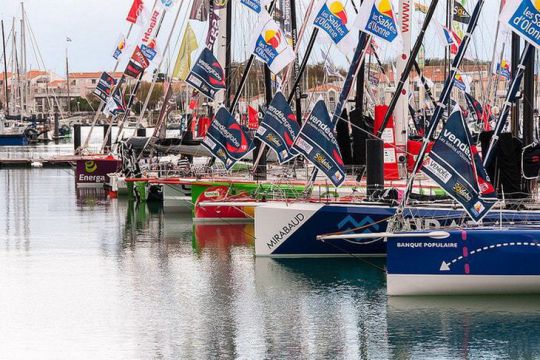
The rules of the Imoca class, which were initially quite brief, have hardened over the years in order to prevent accidents, preserve the navigability of the sailboat and the survival of the sailor.
While safety is the main driving force behind these rules, their subtleties leave architects and sailors a great deal of freedom to innovate.
How is a Imoca??
It's quite simple to visualize, an Imoca is one of the fastest racing monohulls. These lightweight sailboats, which are resistant to the worst conditions, are at the cutting edge of technology.
And thanks to the diabolo system, the rigging can be adjusted in all directions.
Constructions of goldsmiths in composite materials, they now carry sensors from everywhere and are preparing to fly on their foils. The skippers know in real time the tension in the runner The computer offers them satellite images of the globe and their autopilots are more powerful than an Airbus.
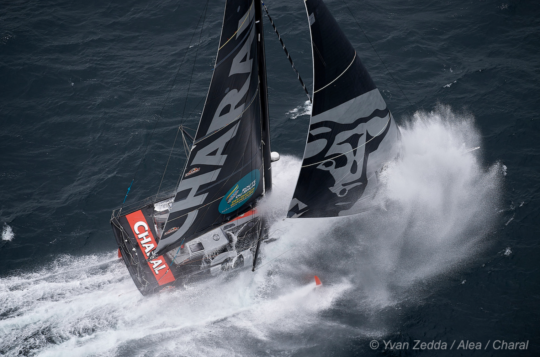
But an Imoca is also about measurements . Because, apart from the colour of their sponsors, they share many characteristics:
So, an Imoca looks like this:
- A length of 18.28 m (60 feet)
- A maximum width of 5.85 m
- A draught of 4.50 m maximum
- An air draft of 29 m maximum
- A choice between
- A limited number of appendices
- A limited number of ballasts
An Imoca must also meet three main safety criteria:
- Be able to get back to the place without outside assistance
- Watertight internal partitioning in the event of overturning
- High floatability in case of capsizing or water ingress.
What are the points of contrôles??
Class rules are in place for runners and they are happy to comply with them. In order to validate the tonnage certificate, in situ measurements are made to determine if the boat fits into the box.
In the Imoca class, René Boulaire, the chief measurer, and Manu Guedon are in charge of the gauge controls.
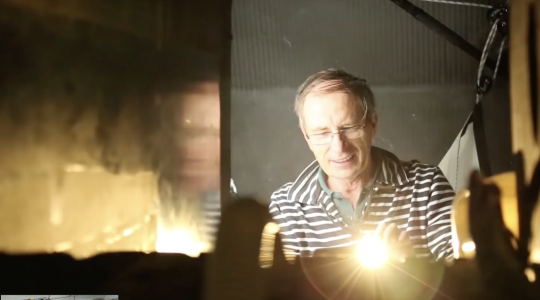
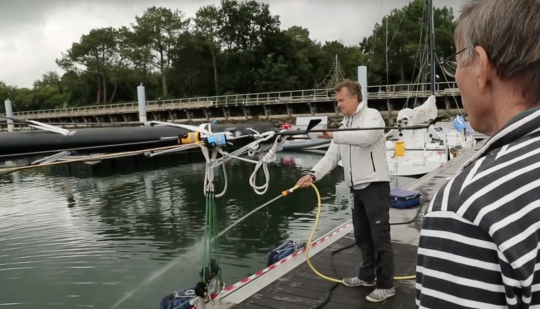
Some criteria are easily measurable such as length, width, weight or number of sails. But other checks are more complex to measure, such as stability and power.
The main steps of gauge control
- During the construction phase. The gauges check the manufacturing techniques, materials used and all dimensions (length, width, draught, air draft).
- At the end of the construction site. The measurers will weigh the boat, the foils, the mast, but also confirm that the keel complies with the specifications. These measurements will be very important for future stability tests.
- Once in the water. The sailboat will be subjected to the famous 90 degree test (video) which literally means laying him down on the water. This will allow you to know its righting moment (the righting force) and the position of the centre of gravity. New Imoca boats are subjected to this test, but also after major modifications such as a change of mast, keel or appendages.
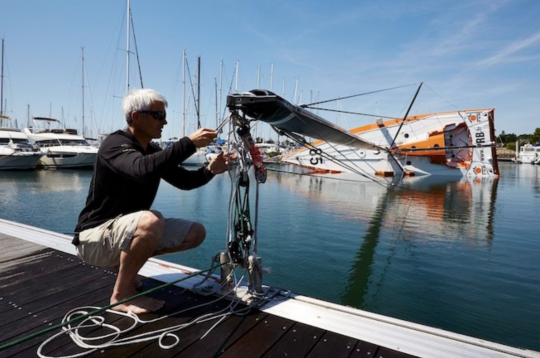
Specific stability and power controls
To ensure the safety of sailors and fairness in the race, the Imoca class enforces stability and power criteria. Strict controls control these determining factors so that they are not exceeded by a team.
A 60' too powerful could be dangerous or downgrade an entire generation. A boat that is too stable would have a net advantage over the flotte?; on the contrary, it would not be stable enough and would be worrying for the open sea.
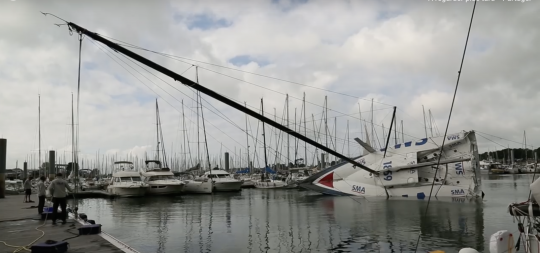
Measure to calculate and validate
"?Pour the new Imoca, the RM (righting moment) of the boat must be less than or equal to 25.5 tons/metres at 25 degrees from gite?", says for example René Boulaire.
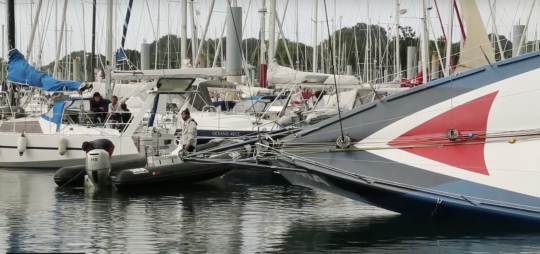
For each sailboat, calculations are carried out at least once a year, thanks to very advanced numerical simulations.
With physical measurements as accurate as possible - this is the challenge of the gauges' work - the powerful ECUs have the right data to control all stability criteria.

Other tests make it possible to verify that the boat does not capsize before 110° of lodging, and that in the event of a complete reversal it can return to its position independently (using the tilting keel).
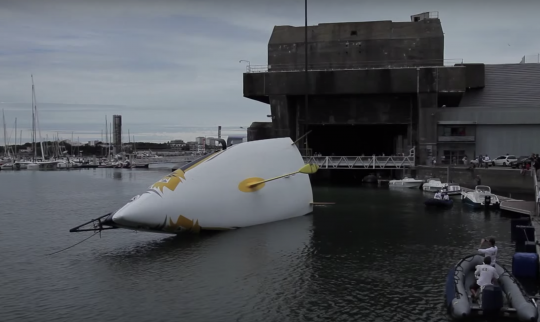
The gauge, what is at stake for the teams??
The gauge is a design tool for teams. The constraints it imposes are taken into account from the birth of the projects to the finish line.
René Boulaire and Manu Guedon are constantly exchanging with the teams, they support them in their efforts while clearly defining the limits linked to the gauge. Because everyone knows that tests are necessary constraints to face the South Seas in a race.

